
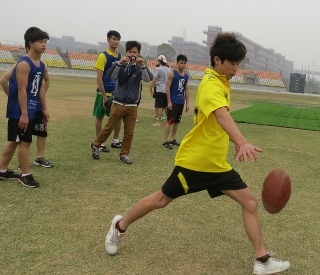 In the second article on the future of Australian football in Asia, we spoke with Darrell Egan (founder of the Donnguan Blues in China) about how has been engaging locals in the game and the way to replicate and sustain such a program. In today's piece Darrell expands on his thoughts about developing an Asia-wide body to ensure the region stops being left behind in footy progress. Later we'll talk to some of the other Asian clubs, including a separate proposal for a Southeast Asian league, and we hope to discuss with the AFL their vision for the region.
In the second article on the future of Australian football in Asia, we spoke with Darrell Egan (founder of the Donnguan Blues in China) about how has been engaging locals in the game and the way to replicate and sustain such a program. In today's piece Darrell expands on his thoughts about developing an Asia-wide body to ensure the region stops being left behind in footy progress. Later we'll talk to some of the other Asian clubs, including a separate proposal for a Southeast Asian league, and we hope to discuss with the AFL their vision for the region.
We put it to Darrell that he'd mentioned to us the concept of setting up a body or league for footy in Asia and possibly the Pacific. Are you thinking Asia-Pacific or just Asia? Did he see it as being a formal governing body for the game in Asia or just a forum for developing ideas and setting up matches?
"The first thing is we have to ask is... Where is Aussie rules going international? What fruits can bear from the hard pioneering work Australians have have done bringing the game to these countries?
"The direction needs to be more local engagement which in turn attracts large global sponsors to those countries as you are including their demographic. We have to make these global footy pioneering Australians or locals feel their hard work has counted for something and this has to be a well structured, well sponsored and supportive formal peak body to empower them on the ground.
"Also Asia demographically is a great place to kick off Australian Rules football in a formal international sense".
"There maybe immediate engagement problems with an Asia Pacific peak body which will have a high locals content. However we have Asian countries which are attracting locals and we can put this peak body up to help foster brother club relationships in Australia and the engagement program I outlined. When the Asia body is running it may later engage the Pacific into one body.
"The first issue is local involvement.
"Currently in Asia we have Japan, East Timor, Laos, Indonesia, India, Borneo and our local Chinese players who are involved across some teams here to form representative teams with locals to be included in an Asia Australian football peak body.
"We can set a 16 locals out of a 22 player squad requirement for their national team to have a representative on the peak body. They would have to have at least 10 locals in their national team to be a member on the peak body and the peak body can assist in them reach the representative target.
"Once it has established a constitution, future directions and a competition structure this peak body can engage large sponsors to support their international clubs in their needs for travel for competitions.
"In regards to space Guangzhou has a great ground in the Guangzhou cricket stadium to host an Asian event. One thing I know from locals is the Chinese government are more likely to support a sport which has an international hosted in Guangzhou which would be an appropriate ground".
It's a bold vision, but what does it really mean? Japan already travel featuring all locals, including for the International Cup. China also played at IC08 and IC11. Does Darrell want to see more club versus club games between countries, or internationals between countries, even a formal international Asian league?
"The quota I mentioned in the previous question is required as a benchmark. However countries with mostly expat players only are welcome to play supporting games with other expat teams at these competitions as a separate body if they choose".
What about local development prior to internationals, is it more important to just get weekly or fortnightly games going within cities, such as 9-a-side / metro leagues as now seen in several countries such as the United States?
"The issue of 9-a-side competitions usually have to do with space issues and access to space in certain countries. I think these games are worthy for training and local comps. However with more international peak body structure and larger sponsorship involvement the issue of financing of a large ground where a number of clubs in that country's Footy region can share will allow them to train and play as 18, 16 or 14 a side depending on player numbers".
But would it be better to focus on local leagues first, build critical mass there, then push for internationals featuring the cream of the crop, so a bigger base to the pyramid, and a better standard to put on show and therefore more likely to gain that crucial sponsorship? Or does Darrell think the international matches have to come closer to the start of the process?
"A local sustainable club and player development program can be put together by a peak body as I suggested running concurrently a little bit later into the development program and medium term. The peak body's function to engage sponsorship to assist these programs. The structure of this program can be worked on with input of the countries already engaging locals.
"We have to present a good plan. As a good mate of mine said "those who don't plan get what they planned for, zero".
"As these countries have already engaged locals and had participation in Asian cups or other overseas competitions at least for the medium term they can field a team for exhibition international games.
"The sponsorship will be based on growing relationship with the sponsors and a structured plan put to them".
It remains to be seen whether Darrell's ideas get much traction or are controversial. They also raise the question of what is the AFL's intention in the region. The AFL is formally recognised by most football playing nations as the world governing body, and in recent times has been heavily involved in the Pacific and assisted with establishment of AFL Europe, so presumably they too have views about the best way forward in Asia. We asked Darrell if he'd discussed this concept with AFL Game Development such as Tony Woods or AFL Asia-Pacific's Andrew Cadzow.
"I have expressed the view of local engagement strategies but not Asia or Pacific. I am not the only one with a view on this and it would not be my place.
"I think the countries mentioned whom have locals involved are the ones who need to form a consensus on a direction and present this formally".
So what is he hoping for then in 2013 in terms of a wider Asian body, and has he had much contact with other countries in formulating this idea? Would he like players and officials and volunteers representing other countries to contact him to further develop the proposal?
"I have had no formal discussions with other country's teams. I have put my view to some of the representatives of some of those countries.
"World Footy News has served as an important international media in communicating Footy worldwide and can be an initial facilitation point to get these countries to the table.
"This has to be a co-ordinated effort of stakeholders in Footy in Asia and internationally. Such a direction can be modeled in other global regions if appropriate to those regions".
worldfootynews.com would like to thank Darrell Egan for his efforts in international footy so far. Some of the ideas put forward made sense to the editorial team, others we thought were well intentioned but we wondered if they had much chance of success in practice and may need wider input and modifying. But we certainly all agreed that Asian footy needs a kick along if it's to keep pace with other regions of the world. We welcome feedback from within Asia and also the wider footy community - people can leave comments here or contact us directly (and we can also put you in contact with Darrell) or of course the countries and clubs will hopefully talk directly to each other to find a way to accelerate the sport's growth.
However this is not the end of this Asian footy future series. Still to come are a separate plan for an East Asian league, some thoughts from other nations, and hopefully the AFL will outline their ideas for Asia.
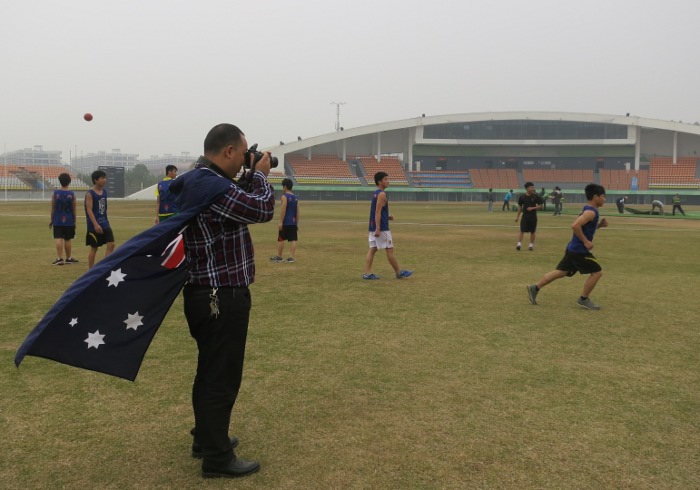
Chinese footy
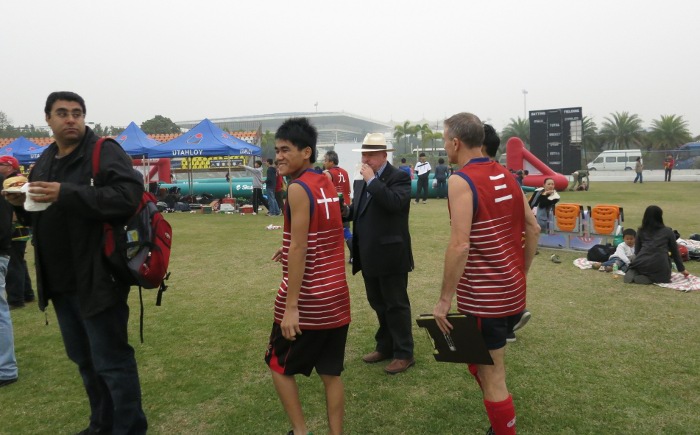
Chinese footy
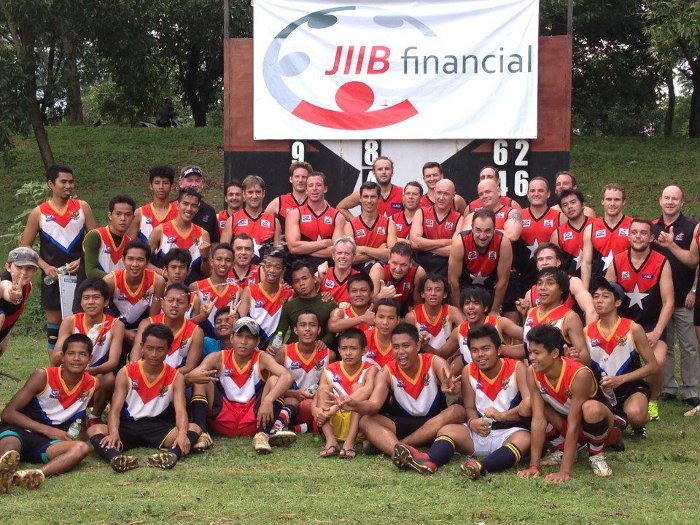
Locals involved in footy in Indonesia
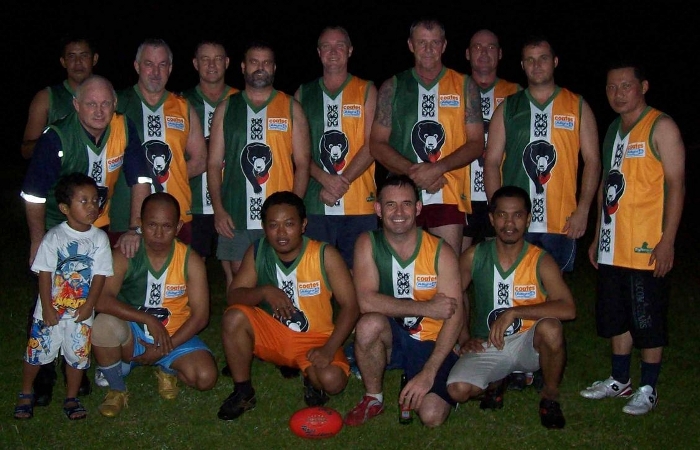
The Borneo Bears








 RSS news
RSS news Twitter
Twitter Facebook
Facebook